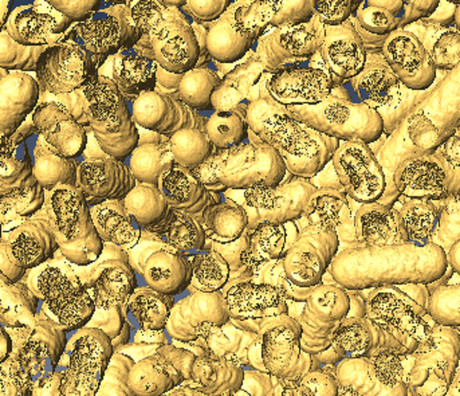Artificial enzymes use light to kill bacteria

Researchers led by RMIT University have developed an artificial enzyme that uses light to kill bacteria, and which could one day be used in the fight against infections.
Made from tiny nanorods, 1000 times smaller than the thickness of the human hair, the team’s ‘NanoZymes’ use visible light to create highly reactive oxygen species that rapidly break down and kill bacteria. They are said to offer a major cutting edge over nature’s ability to kill bacteria, according to lead researcher Professor Vipul Bansal.
“For a number of years we have been attempting to develop artificial enzymes that can fight bacteria, while also offering opportunities to control bacterial infections using external triggers and stimuli,” said Professor Bansal, who serves as director of RMIT’s Sir Ian Potter NanoBioSensing Facility. “Now we have finally cracked it.”
Professor Bansal explained that the NanoZymes combine light with moisture to cause a biochemical reaction that produces OH radicals and breaks down bacteria. They currently use visible light from torches or similar light sources, but the researchers are hopeful that in the future they could be activated by sunlight.
The enzymes have already been proven to work in a lab environment, with the results published in the journal ACS Applied Nano Materials. As noted by Professor Bansal, “We have shown that when shined upon with a flash of white light, the activity of our NanoZymes increases by over 20 times, forming holes in bacterial cells and killing them efficiently.”
The NanoZymes work in a solution that mimics the fluid in a wound, which could be sprayed onto surfaces. They are also produced as powders to mix with paints, ceramics and other consumer products — which could mean bacteria-free walls and surfaces in hospitals.
Public toilets — places with high levels of bacteria, and in particular E. coli — are also a prime location for the NanoZymes. In fact, the researchers believe their new technology may even have the potential to create self-cleaning toilet bowls.
Professor Bansal said that this next generation of nanomaterials is likely to offer new opportunities in bacteria-free surfaces and controlling the spread of infections in public hospitals.
The researchers are now evaluating the long-term performance of the NanoZymes in consumer products, with Professor Bansal stating, “The next step will be to validate the bacteria-killing and wound-healing ability of these NanoZymes outside of the lab.
“This NanoZyme technology has huge potential, and we are seeking interest from appropriate industries for joint product development,” Professor Bansal concluded.
Testing more antibodies with fewer lab mice
Researchers have developed a technology that can be used to test 25 antibodies simultaneously in...
Nanofibre uniform protects soldiers against chemical threats
A next-generation uniform prototype employs nanofibres to safeguard wearers from chemical and...
Monoclonal antibody shows protection against COVID variants
A monoclonal antibody appears effective at neutralising the numerous variants of SARS-CoV-2, as...




